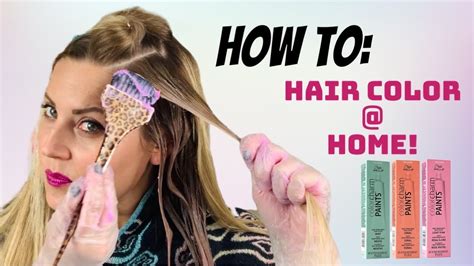Choosing the right hair color can be a daunting task, but with the right guidance, you can achieve the perfect shade that complements your skin tone and style. Here’s a comprehensive guide to help you navigate the world of hair coloring, from selecting the perfect shade to applying it like a pro.

1. Determine Your Skin Tone and Undertone
Your skin tone and undertone will play a crucial role in determining the right hair color for you. Here’s how to identify your skin tone:
- Fair skin: Light and translucent, with a pinkish hue
- Medium skin: Slightly darker than fair skin, with a peachy or golden undertone
- Dark skin: Deep and rich, with a brown or olive undertone
Once you know your skin tone, determine your undertone:
- Warm undertone: Veins appear green and your skin tends to tan easily
- Cool undertone: Veins appear blue or purple and your skin burns easily
- Neutral undertone: A mix of both warm and cool undertones
2. Choose the Right Shade
When choosing a hair color, consider your skin tone, eye color, and personal style. Here are some tips:
- Fair skin: Opt for cool shades like ash blonde, platinum, or beige.
- Medium skin: Choose warm tones like honey blonde, copper, or caramel.
- Dark skin: Experiment with deep hues like mahogany, black cherry, or espresso.
- Warm undertone: Choose warm colors that enhance your natural warmth.
- Cool undertone: Opt for cool tones that complement your skin’s blue or purple undertones.
- Neutral undertone: You can explore a wider range of shades, both warm and cool.
3. Decide on Coloring Technique
There are various hair coloring techniques available, each with its own unique effects. Here are the most common:
- Permanent hair color: Penetrates the hair shaft and changes the natural pigment. It provides long-lasting results and covers gray hair effectively.
- Semi-permanent hair color: Less permanent than permanent color, it fades gradually over 6-8 weeks. It’s a good option for adding color or enhancing natural highlights.
- Demi-permanent hair color: Provides a balance between the intensity of permanent and the fading speed of semi-permanent color. It typically lasts for 6-8 weeks.
- Temporary hair color: Washes out after a few shampoos, allowing you to experiment with different shades without committing to a long-term change.
4. Prepare Your Hair
Before coloring your hair, it’s essential to prepare it to ensure optimal results.
- Protect your scalp: Apply a barrier cream or petroleum jelly around your hairline to prevent skin irritation.
- Wash your hair: Using clarifying shampoo to remove any styling products or dirt.
- Towel dry your hair: Leave it slightly damp but not dripping wet.
5. Apply the Hair Color
Follow the instructions provided with your chosen hair color carefully.
- Mix the color: Combine the colorant and developer according to the manufacturer’s instructions.
- Apply to roots first: Start by applying the color to your roots using a brush or comb.
- Work through mid-lengths and ends: Once the roots are covered, distribute the remaining color evenly through the rest of your hair.
- Process time: Allow the color to process according to the recommended time.
6. Rinse and Condition
Once the processing time is complete, rinse your hair thoroughly with lukewarm water.
- Use a color-safe shampoo and conditioner: To preserve the vibrancy and longevity of your new color.
- Avoid heat styling: For the first 24-48 hours, minimize the use of heat styling tools to prevent color damage.
7. Maintain Your Color
To keep your hair color looking its best, follow these tips:
- Use color-safe products: Invest in shampoos, conditioners, and styling products specifically designed for colored hair.
- Avoid over-washing: Avoid washing your hair too often, as this can strip away the color.
- Condition regularly: Deep condition your hair weekly to restore moisture and keep your color vibrant.
- Touch up your roots: As your roots grow out, touch up your color to maintain a consistent look.
1. Can I color my hair at home?
Yes, you can color your hair at home, but it’s important to follow instructions carefully and use high-quality products to avoid any mishaps.
2. How long will my hair color last?
The longevity of hair color depends on the type of color you choose and how well you maintain it. Permanent hair color can last for several months, while semi-permanent and demi-permanent colors typically fade within a few weeks.
3. Can I dye my hair if I have previously treated it with bleach?
Bleached hair is more porous and prone to damage. Consult a professional stylist before coloring bleached hair to avoid any complications.
4. What are the common mistakes to avoid when coloring hair?
Some common mistakes to avoid include:
– Overlapping color applications
– Using the wrong developer
– Ignoring the processing time
– Over-washing or using harsh products after coloring
